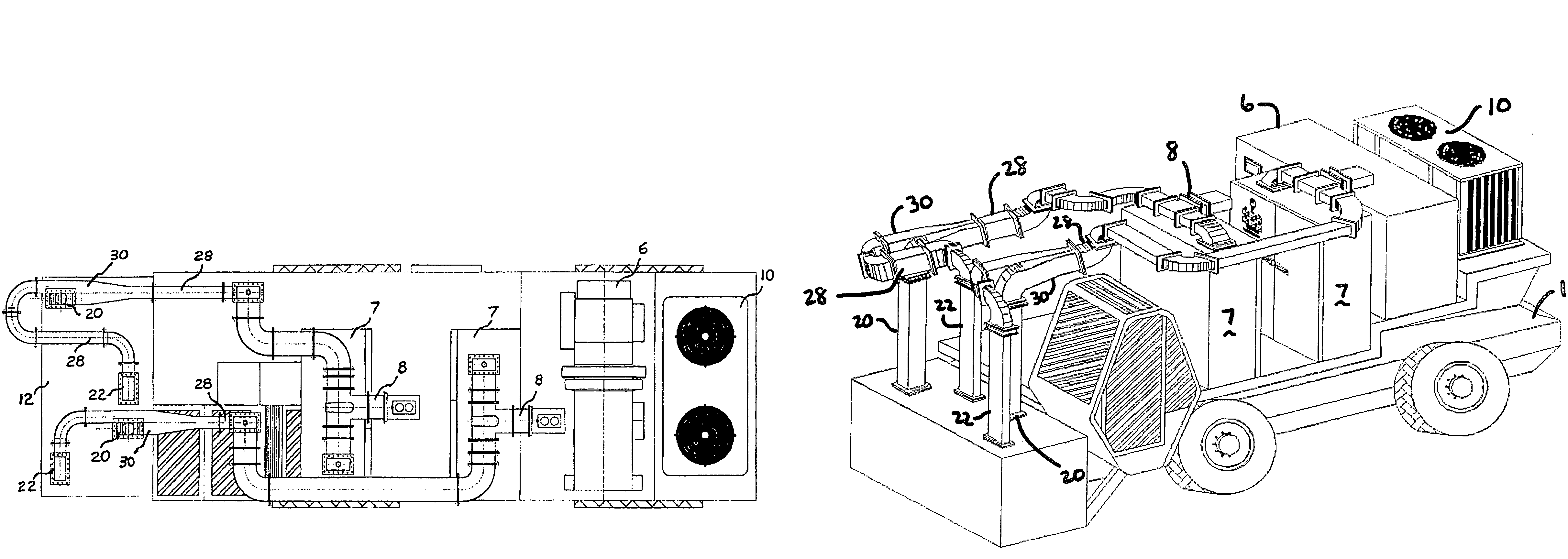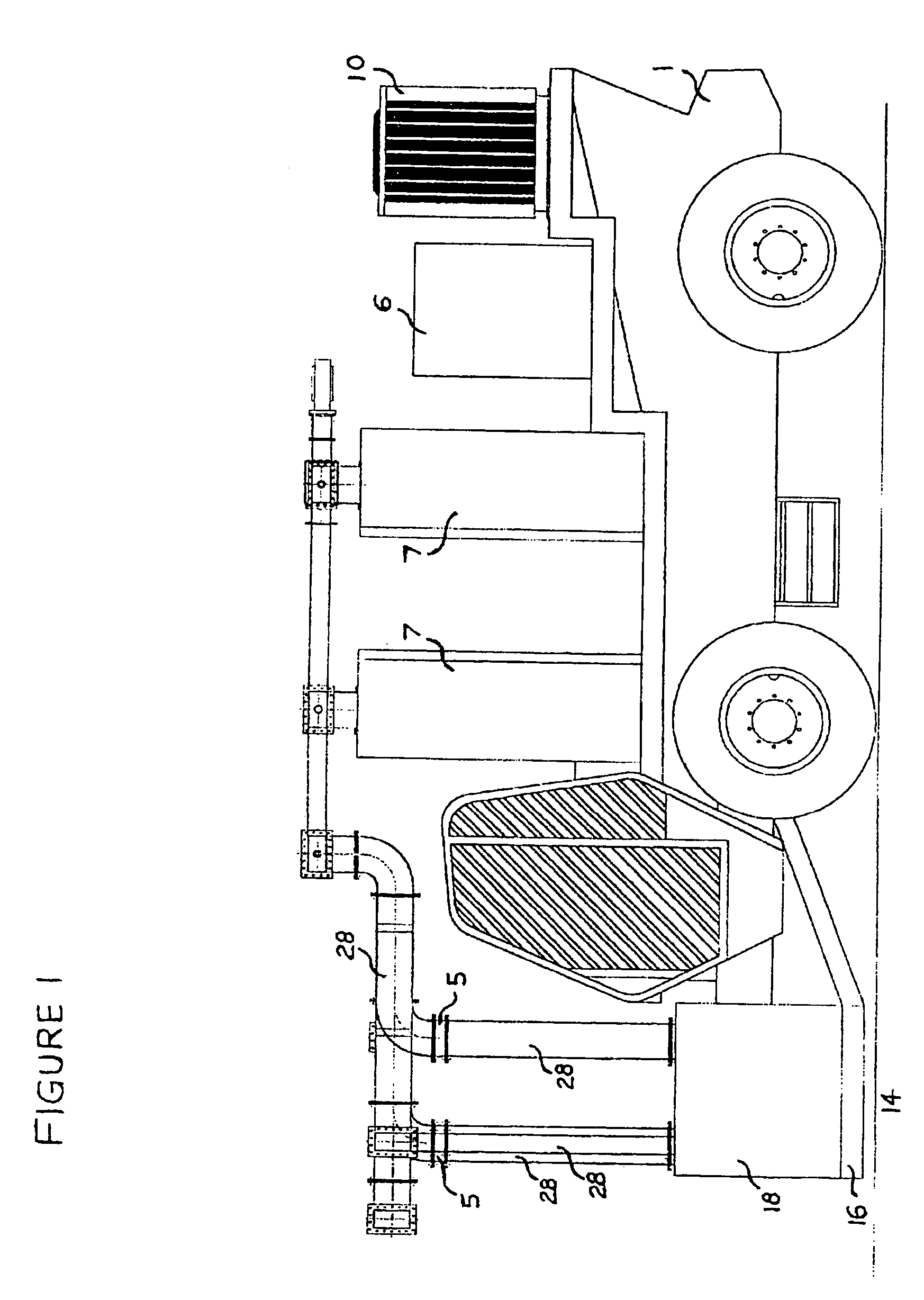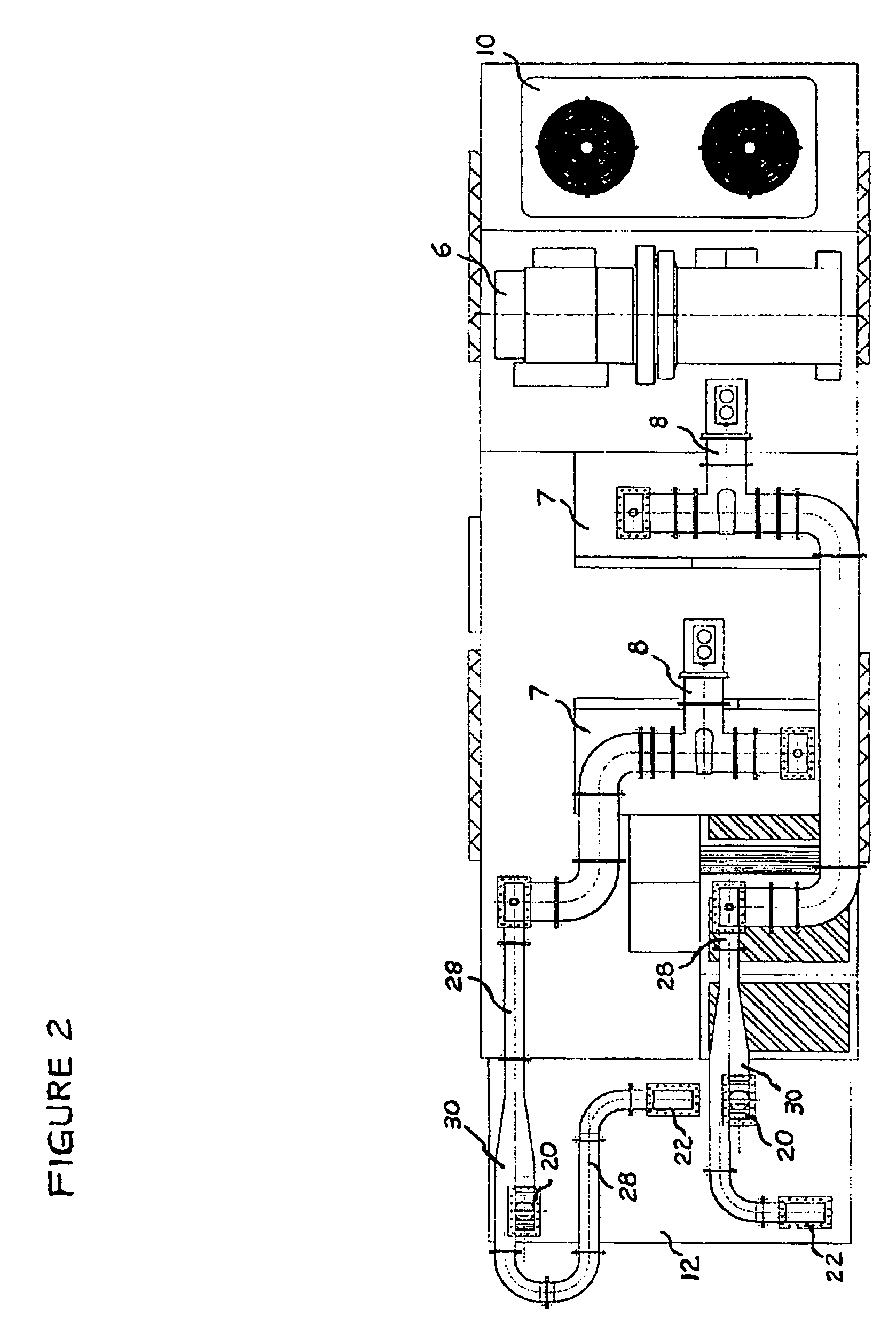Continuous method and apparatus for microwave-based dryer
a technology of microwave dryer and continuous method, which is applied in the direction of lighting and heating equipment, furnaces, and ways, can solve the problems of high initial capital equipment and operating costs, and serious skin burns to operating personnel, so as to reduce the moisture content and reduce the cost of jet engine-based systems. , to achieve the effect of efficient and economical production of roadbeds
- Summary
- Abstract
- Description
- Claims
- Application Information
AI Technical Summary
Benefits of technology
Problems solved by technology
Method used
Image
Examples
example # 1
EXAMPLE #1
[0047]This example 1 was conducted with a commercially-available 1500 Watt microwave oven operating at 2450 MHz in batch mode, with forced hot convection air added via a portable dryer and an exhaust fan to remove the moisture-laden air from the unit. The material met the desired value of reduction in moisture content to 15% or less. It was determined that, for roadbed saturated soils, increasing microwave power levels reduced drying times, while drying rates are reduced as microwave power levels are increased. The demonstration unit was invented to confirm the viability of microwave roadbed drying applications to potential customers prior to purchase. The data presented in the examples reflect roadbed materials of varying consistencies.
[0048]
TABLE ITypical Roadbed Soil Material PropertiesSampleSampleSampleSampleCharacteristic#1#2#3#4Input Moisture Content, %3524.424.230Output Moisture Content, %1515.014.011.0Density, lb / ft380130113.5128Specific Heat, Btu / lb-° F.0.240.2080...
example # 2
EXAMPLE #2
[0056]In addition to the ability to use the microwave apparatus in the manner described hereinabove, it is also designed for agricultural field applications in that it can reduce herbicides, insecticides and achieves total insect and pathogen destruction. The beneficial materials in the soil such as nitrogen and phosphorus are not affected by microwave excitation. It should be noted that microwave excitation is used, not microwave irradiation since microwave energy is in the radio frequency portion of the spectrum, and therefore is not ionizing radiation as is present with X-rays.
[0057]A series of microwave tests were conducted on eight soil samples plant growth, insects and weeds, were received in plastic containers measuring 12½″ L×9″ W×6″ H or approximately 0.39 cubic feet in volume. The soil samples were moist and compacted in the plastic containers. After preliminary review of the samples, an appropriate power density calculation was performed to determine the amount ...
PUM
 Login to View More
Login to View More Abstract
Description
Claims
Application Information
 Login to View More
Login to View More - R&D
- Intellectual Property
- Life Sciences
- Materials
- Tech Scout
- Unparalleled Data Quality
- Higher Quality Content
- 60% Fewer Hallucinations
Browse by: Latest US Patents, China's latest patents, Technical Efficacy Thesaurus, Application Domain, Technology Topic, Popular Technical Reports.
© 2025 PatSnap. All rights reserved.Legal|Privacy policy|Modern Slavery Act Transparency Statement|Sitemap|About US| Contact US: help@patsnap.com



